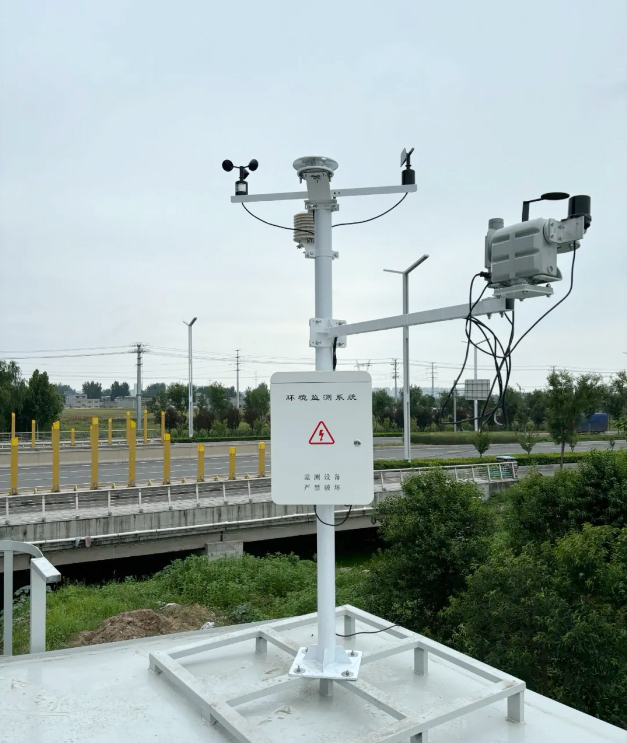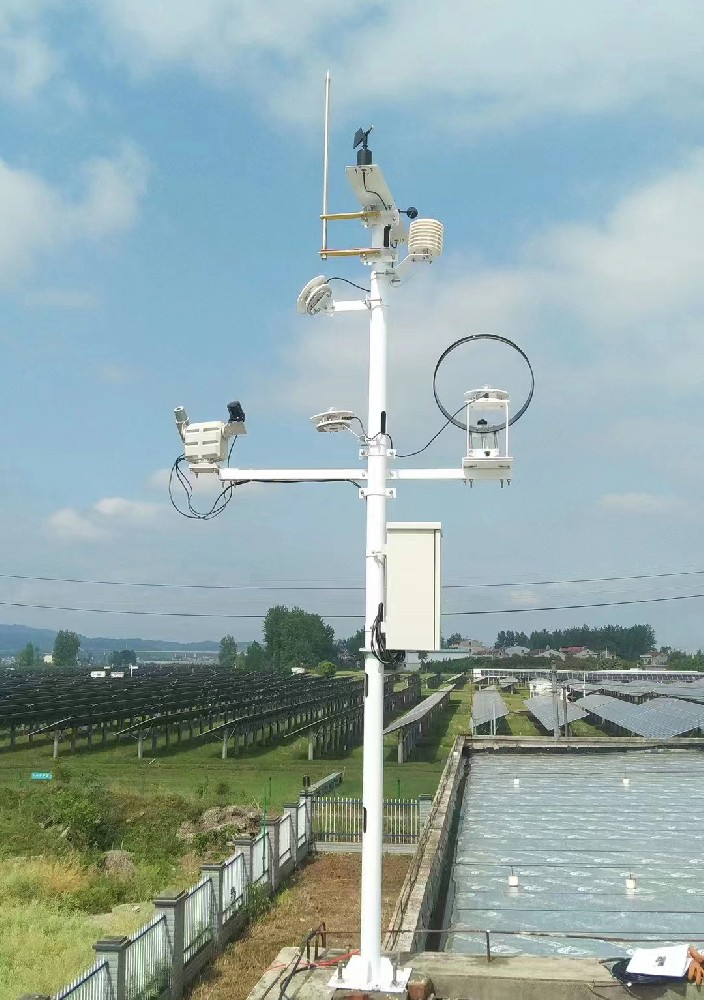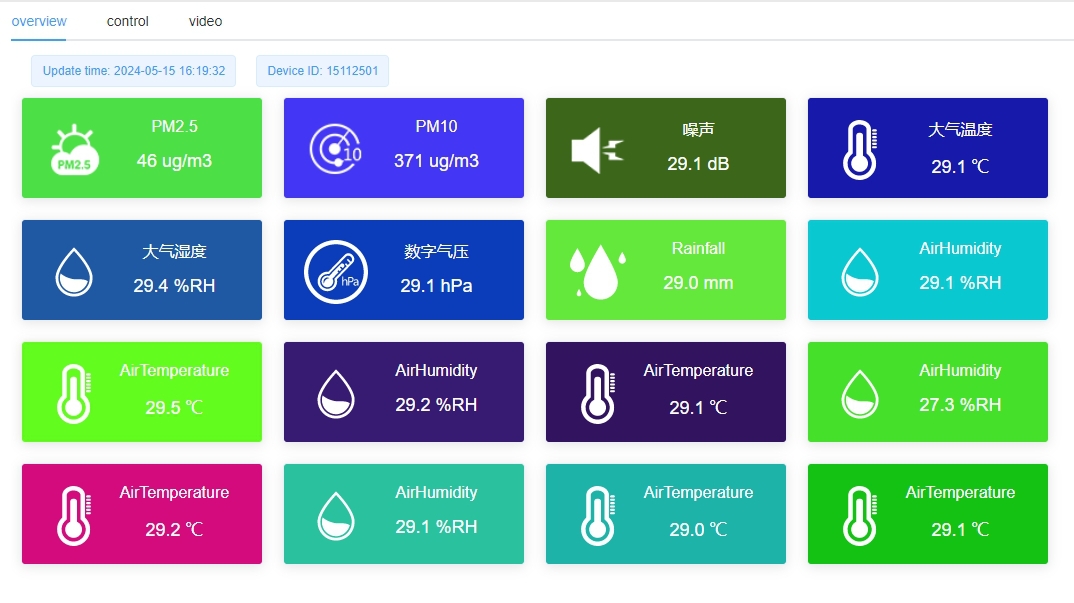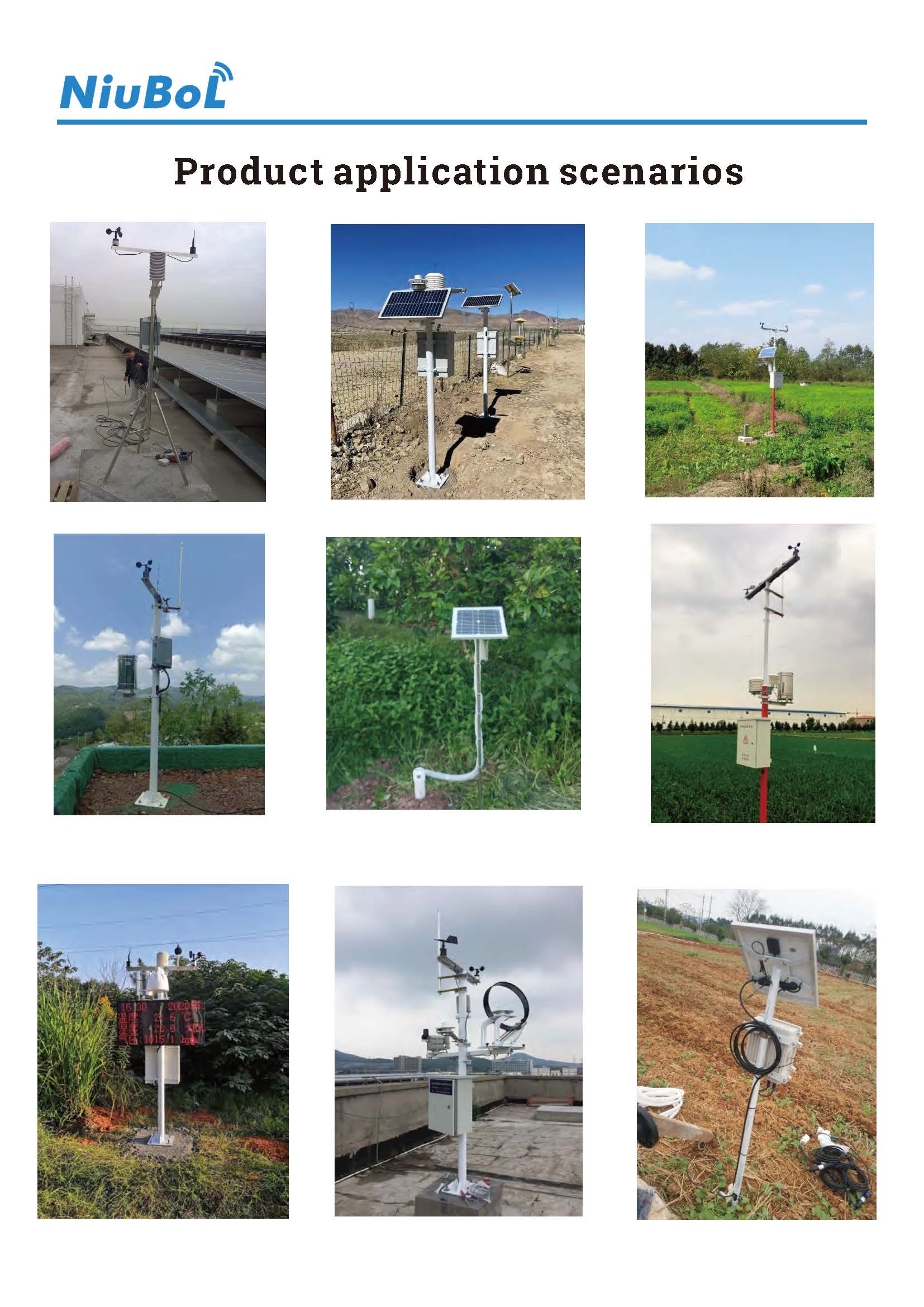

— Blogs —
—Products—
 Consumer hotline +8618073152920
Consumer hotline +8618073152920 WhatsApp:+8615367865107
Address:Room 102, District D, Houhu Industrial Park, Yuelu District, Changsha City, Hunan Province, China
Product knowledge
Time:2024-10-19 18:11:52 Popularity:402
The following is a detailed introduction to industrial weather station:
Industrial weather station is a facility specially designed for monitoring and analysing the meteorological conditions in industrial areas, usually deployed near industrial sites such as industrial parks, chemical plants, energy generating stations, etc. It is used to monitor and record meteorological elements and atmospheric pollutants related to industrial activities.
An industrial weather station is a weather monitoring system designed specifically for industrial use, which usually contains more advanced and accurate sensors, as well as more sophisticated data processing and analysis capabilities. Below are some of the major sensors and components of an industrial weather station:
- Temperature and humidity sensors: used to measure the temperature and humidity of the environment and provide accurate temperature and humidity data.
- Barometric Sensors: Used to measure atmospheric pressure and provide atmospheric pressure parameters that can be used for weather prediction and meteorological analysis.
- Wind speed and direction sensors: wind speed sensors typically use hot wire or ultrasonic technology, while wind direction sensors typically use wind vane or magnetic induction principles to measure the speed and direction of the wind.
- Barometric Sensors
- Rain sensors
- Air quality sensors (e.g. PM2.5 sensors, PM10 sensors, SO2 sensors, NOx sensors, etc.)
- Harmful gas sensors (e.g. CO, H2S, CH4, etc.)
2. Data Acquisition System: Used to collect sensor data and perform preliminary processing.
3. data transmission system: to transmit data by wired (e.g., Ethernet) or wireless (e.g., Wi-Fi, 4G/5G, satellite communication).
4. data processing and analysis software: used to analyse data, generate reports and provide decision support.
5. power supply system: usually consists of a main power supply and a backup power supply (e.g., batteries or solar panels).
In addition, the industrial explosion-proof weather station is equipped with as well as explosion-proof housing and connectors (in explosion-proof industrial weather station), etc. to ensure the stable operation and safety of the equipment.
RS485 is a commonly used industrial serial communication protocol, featuring long transmission distance and strong anti-interference ability.
The data collector in the industrial weather station can transmit the collected weather data to the host computer or data server for further processing and analysis through the RS485 interface.
4-20mA is a commonly used analogue signal transmission standard, which is widely used in industrial control field.
Some sensors or data collectors in industrial weather stations may support 4-20mA output to transmit weather data in the form of current signals to receiving devices.
1. High accuracy and reliability: Industrial weather stations are often required to provide very accurate data to support critical decisions in industrial production processes.
2. Weather Resistance and Durability: Designed for long term operation in harsh industrial environments such as high temperature, low temperature, humidity, corrosive gases, etc.
3. Versatility: In addition to basic meteorological parameters, the Industrial Weather Station is capable of monitoring specific industry-related parameters, such as particulate matter, hazardous gases, radiation, and so on.
4. Data logging and remote transmission: capable of continuous data logging and real-time data transmission to the control centre via the network.
5. Integration and customisation: can be customised to meet the needs of specific industrial applications and integrated with other industrial systems such as SCADA.

The following factors need to be considered when selecting the right industrial weather station:
- Application scenarios: Identify which industrial environment the weather station will be used in, e.g. petrochemical, mining, manufacturing or transport.
- Monitoring parameters: List the meteorological and environmental parameters to be monitored, such as temperature, humidity, wind speed, wind direction, air pressure, rainfall, particulate matter, hazardous gases, etc.
- Accuracy requirements: Determine the required measurement accuracy according to the application.
- Data logging and transmission: Determine whether data logging function is required, and the data transmission method (wired or wireless).
- Climatic environment: Consider the environmental conditions that the weather station will face, such as extreme temperature, humidity, corrosive gases, sand and dust.
- Installation location: Determine where the weather station will be installed, whether it will be easily accessible, and whether special mounting brackets or structures will be required.
- Cost-benefit analysis: Based on the budget and monitoring needs, perform a cost-benefit analysis to determine an acceptable price/performance ratio.
- Supplier reputation: Select reputable suppliers, check user reviews and case studies.
- Product certification: Ensure that the selected product has passed relevant quality and safety certifications.
- Technical support and maintenance: find out what technical support and maintenance services the supplier offers.
- Comparison of features: Compare the sensor types, measurement ranges, accuracy, data storage and transmission capabilities of different industrial weather stations.
- Durability Comparison: Evaluate the durability and life expectancy of different products.
- Expandability: Consider the ability to add or upgrade sensors that may be needed in the future.
- Integration capability: Ensure that the weather station can be integrated with existing industrial control systems (e.g. SCADA).
- Data format: Check that the data format output from the weather station is compatible with existing systems.
Ensure that the weather station is explosion-proof and corrosion-proof to meet the special requirements of the industrial environment.
Choose the appropriate transmission mode according to the requirements of data transmission distance, stability and reliability, such as RS485, 4-20mA, Wi-Fi, GPRS, etc.
choose the weather station that is easy to install and maintain, in order to reduce the later operation and maintenance costs.
- Ease of installation: Consider the ease of installation and the time required.
- Ease of operation: Select a weather station that is easy to operate and maintain.
- Contact the supplier: Get a detailed quotation and product proposal, including installation, training and maintenance services. 12.
- Field test: Where possible, conduct a field test to verify the performance of the equipment.
- Putting it all together: Make the best decision based on all of the above factors.
Selecting the right industrial weather station is a complex process that requires a combination of technical, economic and environmental considerations. The right choice not only meets current monitoring needs, but should also be flexible and scalable enough to accommodate possible future changes.
The transmission method of an industrial weather station determines how data is transferred from the sensor to the data logging or monitoring centre. The two main types of transmission methods for industrial weather stations include wired transmission and wireless transmission:
- Ethernet: direct connection to the network via Ethernet cable, suitable for weather stations in fixed locations.
- Serial communication: using RS-232, RS-485 and other serial interfaces for data transmission, suitable for short distance communication.
The transmission method of an industrial weather station determines how the data is transferred from the sensor to the data logging or monitoring centre.
- Wi-Fi: sends data to a local or remote server via a wireless network.
- Cellular: Transmits data using a mobile network (e.g. 4G/5G) for remote or mobile monitoring.
- Satellite communication: Transmits data using satellite signals in remote areas or on mobile platforms.
This method has a wide coverage and is not limited by distance, but may be affected by factors such as network stability and signal interference.
- Real-time requirement of data transmission: whether real-time data transmission is required.
- Geographic location and network coverage of the monitoring site.
- Data security and stability: Wired transmission is usually more stable, wireless transmission may require additional security measures.
- Cost: Wireless transmission may involve additional communication costs.

The following factors need to be considered when choosing where to install an industrial weather station:
1. Meteorological Representativeness: Choose a location for installation that is representative of the meteorological conditions in the industrial area to ensure the accuracy and representativeness of the monitoring data.
2. Safety: Ensure that the installation location is far away from flammable and explosive materials and hazardous areas to ensure the safe operation of the weather station.
3. Environmental factors:
- Avoid direct exposure to sunlight to minimise the effect on temperature measurement.
- Ensure that the sensor is located away from sources of pollution, such as emission pipes, chimneys, etc.
- Consider the effect of wind barriers on wind speed and direction measurements.
4. Access and maintenance:
- Select an easily accessible location for routine maintenance and calibration.
- Ensure that there is sufficient operating space for installation and maintenance.
5. Structural stability:
- Ensure that the installation is structurally sound and able to withstand severe weather conditions.
6. power supply:
- Ensure that there is a stable power supply or consider alternative energy sources such as solar energy.
7. data transmission:
- Consider the hardware installation required for the data transmission method, such as antennas, cables, etc.
Taking all these factors into consideration will ensure the data accuracy of the industrial weather station and the long-term stable operation of the system. The correct installation location and transmission method will help to improve the efficiency and reliability of the whole monitoring system.

- Petroleum and chemical industry: monitoring harmful gas leaks to ensure a safe working environment.
- Power plants: Monitor emissions such as SO2, NOx, and particulate matter to comply with environmental regulations.
- Mining industry: Monitor gas composition in mines to prevent explosions and poisoning accidents.
- Manufacturing: Monitoring the factory environment to optimise production processes and improve product quality.
- Transportation and logistics: monitoring weather conditions on roads and ports to ensure transport safety.
The price of industrial weather station varies according to brand, model, configuration and function. Generally speaking, industrial weather stations of high-end brands are more expensive, but with higher accuracy, stability and reliability; while industrial weather stations of low-end brands are less expensive, but may have insufficient performance or defects in some aspects. Therefore, when choosing an industrial weather station, you need to make comprehensive consideration according to the actual needs and budget.

Summary.
An industrial weather station is an important piece of equipment used in industry to monitor and analyse weather conditions. It consists of a variety of sensors and data collectors and other components that are capable of monitoring and recording meteorological elements such as temperature, humidity, barometric pressure, wind speed and direction in real time. When choosing a suitable industrial weather station, factors such as safety, monitoring functions, data transmission methods and post maintenance need to be considered. At the same time, comprehensive consideration needs to be given to the choice of installation location and price. By reasonably selecting and configuring industrial weather stations, enterprises can be provided with more accurate and reliable meteorological information, which helps to ensure industrial production safety, environmental protection and sustainable development.
Related recommendations
Sensors & Weather Stations Catalog
Agriculture Sensors and Weather Stations Catalog-NiuBoL.pdf
Weather Stations Catalog-NiuBoL.pdf
Related products
 Combined air temperature and relative humidity sensor
Combined air temperature and relative humidity sensor Soil Moisture Temperature sensor for irrigation
Soil Moisture Temperature sensor for irrigation Soil pH sensor RS485 soil Testing instrument soil ph meter for agriculture
Soil pH sensor RS485 soil Testing instrument soil ph meter for agriculture Wind Speed sensor Output Modbus/RS485/Analog/0-5V/4-20mA
Wind Speed sensor Output Modbus/RS485/Analog/0-5V/4-20mA Tipping bucket rain gauge for weather monitoring auto rainfall sensor RS485/Outdoor/stainless steel
Tipping bucket rain gauge for weather monitoring auto rainfall sensor RS485/Outdoor/stainless steel Pyranometer Solar Radiation Sensor 4-20mA/RS485
Pyranometer Solar Radiation Sensor 4-20mA/RS485
Screenshot, WhatsApp to identify the QR code
WhatsApp number:+8615367865107
(Click on WhatsApp to copy and add friends)